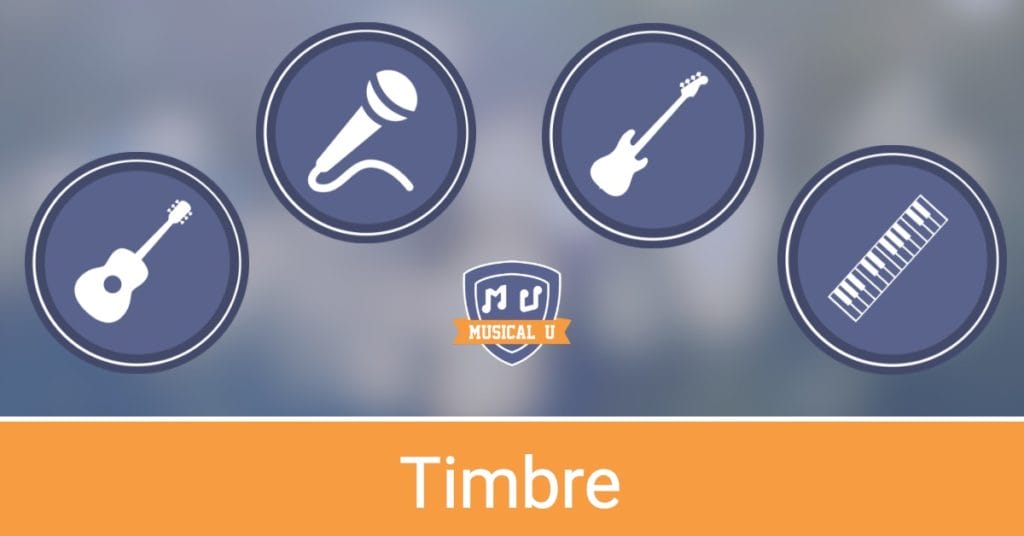Timbre (pronounced “tam’-ber”, like the first two syllables of the word “tambourine”) – what does it mean? Timbre refers to what is often called “tone” or “tone color” – the quality of the sound of an instrument or voice. In essence, timbre is what makes one voice, one instrument sound different than another. But, beyond that, each instrument or voice is capable of producing a wide variety of timbres. Mastering and employing these timbres for your own expressive purposes adds a whole new dimension to your musicality.
Timbre can be shifted and shaped with a myriad of techniques – from which part of your finger strikes the string to the subtle touch of a key to how you dial in your electronics. Think of timbre as your musical paint set – whether you’re into rainbows or shades of grey, your tonal palette colors in the lines of your notes and chords.
How important is timbre?
Let’s put it this way: you can tear up your guitar fretboard at 1000 notes per second, play six-part polyphonic supra-vertical improv on your bass, or arrange and play a master mash-up of all Liszt’s Transcendental Études on your piano. But if your guitar sounds like the last strings you put on were dinosaur gut, your bass sounds like rubber bands on a wet shoebox, or your piano is a used mini keyboard purchased for 25 cents at your cat-loving neighbor’s garage sale from a bin marked “Special Discounts on Especially Smelly Items” …
Who wants to listen?
That’s why in this month’s Instrument Packs, Musical U’s Resident Pros put together these special Resource Packs on the tasty topic of timbre.
Guitar
Without even getting deep into pedals and amps, Resident Pro Dylan Welsh shows you how hand placement, finger techniques, and a little twist of a knob can radically change your guitar tone from one musical moment to the next:
Including:
- Different ways we can control how “bright” or “dark” our guitars sound (which is a very important element of timbre control).
- Different flavors of “distortion” or “overdrive,” which is a vital timbreal element to control for guitarists specifically.
- The way that different types of guitars have their own inherent timbre that can differ widely from one to the next.
- As for MP3’s, Dylan plays through a basic major scale, but altering the timbre of his guitar in the ways that he describes in the video
After Dylan’s timbre techniques and demos, you’ll be on your way to creating your own expressive sounds
Piano
Timbre, or “tone color,” refers to the quality of tone that is distinctive to a particular instrument. This month’s resource pack will unpack a few of the ways that we can change the timbre of our piano. Resident Pro for piano, Sara Campbell, shows how several concepts and techniques intersect to form piano timbre:
Including:
- How timbre, velocity, and volume are linked on the piano.
- Ways to change timbre through dynamics, articulation, and pedaling.
- Exercises to practice these timbral variations.
- MP3 tracks to demonstrate the exercises, with call and response for both imitation and improvisation.
Think the only way to change piano timbre is to buy an electronic keyboard? Think again! Sara shows you that your old acoustic piano still has some tricks up its sleeve.
Bass
Timbre is one of Resident Bass Pro Steve Lawson‘s favorite topics! Rather than going down the rabbit hole of pedals and effects (of which he has many), Steve focuses on the techniques and tricks right there in your hands and on bass, and produces a vast array of timbres before beginning to stomp on a pedal:
Including:
- How it is that every musician is a sound designer!
- The three main areas where your sound is defined:
- your technique,
- your bass and
- the signal path for your amplifier and effects.
- Some of the most useful and commonly used techniques for modifying the timbre of your bass to suit specific lines.
- How the controls on our bass help us to shape the sound further.
- What difference your choice of strings makes to the sound of your bass.
- MP3s demonstrating specific lines in different styles and what you can do to match your timbre to the style and other instruments.
Steve is passionate about timbre, and you will be too once you’ve opened your ears to the possibilities he demonstrates in this awesome Timbre Resource Pack.
Coming Up Next Month…
Chord voicing describes the vertical spacing of the notes of a given chord. You may know this from music theory’s concept of chord inversions, but it has huge practical value in adding depth to your music. Our resident pros will tackle this topic next month, teaching you how to use chord voicing to do incredible things with harmony and arrangement.
Interested in getting access to these resources and much more, with an Instrument Pack membership? Just choose that option during checkout when you join Musical U, or upgrade your existing membership to get instant access!







